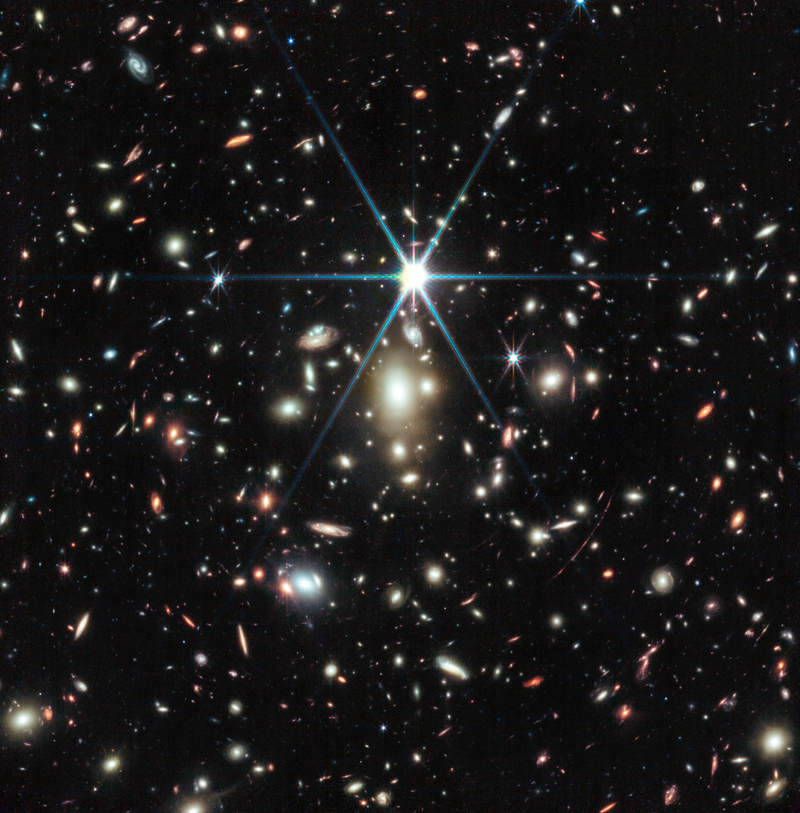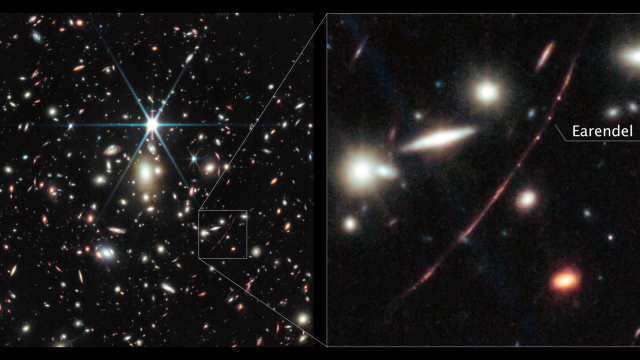Researchers have trained the unrelenting gaze of the Webb Space Telescope on Earendel, the most distant star ever detected, revealing the star’s colour and a potential companion star.
Earendel (“morning star” in Old English) was first spotted by the Hubble Space Telescope last year. Based on its mass and it’s superlatively ancient light, the researchers who found Earendel say the star is no more.
“It has gone supernova by now,” Brian Welch, an astrophysicist at The Johns Hopkins University and lead author of the paper first describing Earendel, told Gizmodo at the time, “and exploded and spread its guts across the rest of the universe to create those heavier elements that will eventually go into making things like you and me.”
The star sits (or given its presumed demise, sat) in the Sunrise Arc, a strongly magnified galaxy from the first billion years of the universe’s existence. The arc is a quirky sight produced by gravitational lensing, the phenomenon that allows astronomers to peer much deeper into space (which is to say, much farther back in time) than they could otherwise.
Gravitational lensing occurs when an intervening object bends and magnifies light from a distant source as it travels toward the observer. The Sunrise Arc is just that—a thin arc of light—because its light is intensely bent (to a factor of thousands) by a massive galaxy cluster named WHL0137-08. If you scrutinize the image of the galaxy cluster, you can see the effects of gravitational lensing on other galaxies surrounding the cluster.

Webb’s image of Earendel was taken with the telescope’s Near-Infrared Camera, or NIRCam. The image was produced from two exposures taken on July 30, 2022 and January 1, 2023. Telescopes’ view of Earendel is greatly boosted by the gravitational lensing, but the star is mere twinkle: It’s a massive star more than twice as hot as the Sun and about one million times more luminous, according to NASA.
As we noted in our first reporting on Earendel, scientists hoped that Webb’s observations of Earendel would clarify whether the star had a smaller companion, as many massive stars do.
Based on the colours in Earendel, researchers think that a cooler, redder companion star does sit alongside its massive partner, though they’re so close together it’s not possible for Webb to distinguish them in the sky.
The Sunrise Arc is beaded with several bright star clusters along its length, one of which is Earendel. The Webb observations also found star-forming regions along the arc and some small star clusters.
Space telescopes may yet be able to see the very light first stars composed of hydrogen and helium. This detailed glance at Earendel could be just the first sight of what’s possible.
